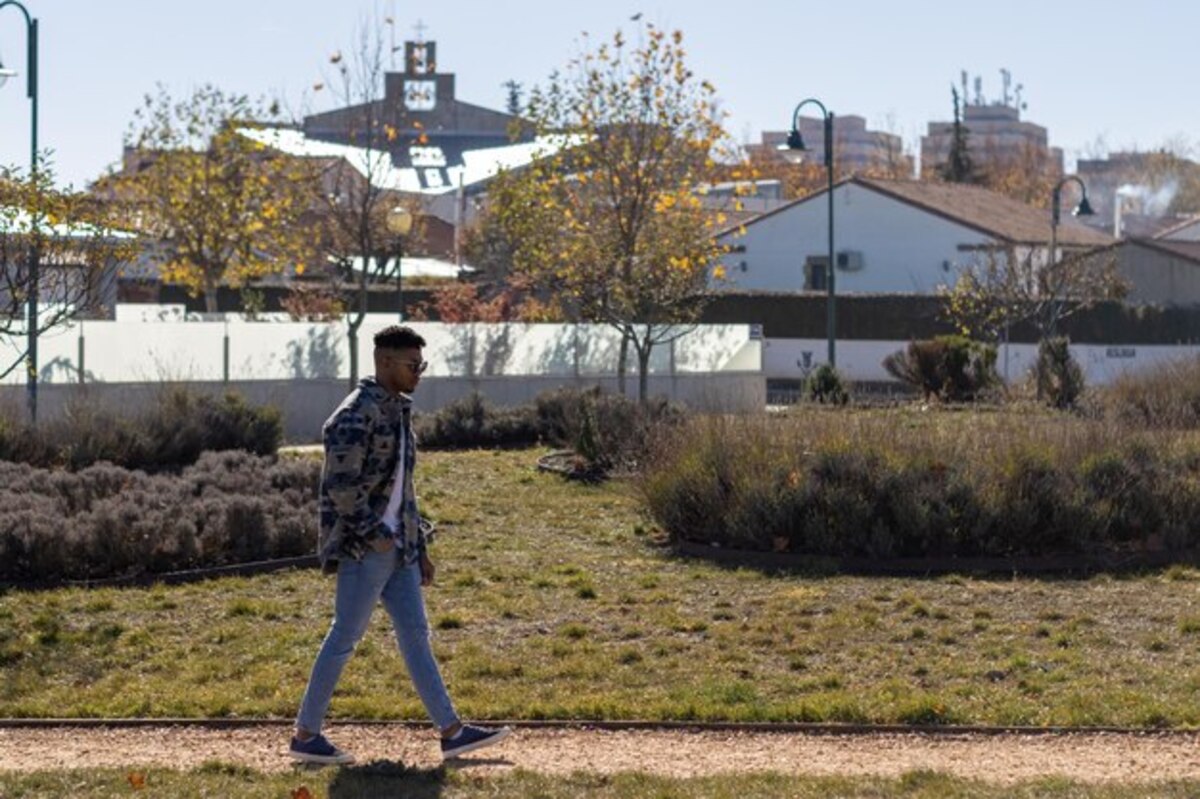Hidden advantages of location in the real estate market

Decisions about location in the real estate market are crucial, and often the comparison between rural and urban settings is overlooked. This article will explore the hidden advantages of each option, revealing how a smart choice can not only influence your quality of life but also the appreciation of your investment. From the tranquility of the countryside to the development opportunities in the city, discover which factors truly make a difference when choosing your next home.
1. The perception of value: Rural vs Urban?
The perception of value in the real estate market is strongly influenced by location, and this perception can vary drastically between rural and urban environments. In urban areas, buyers often see proximity to services, employment, and entertainment as a significant added value. Properties in these zones tend to have high demand, which can result in constant appreciation. However, this dynamic environment can also bring the stress of city life, leading many to question whether that value truly compensates for the fast-paced and hectic lifestyle. On the other hand, rural properties offer a completely different experience that can be equally valuable but often undervalued. The peace and tranquility of the countryside not only contribute to the emotional well-being of its inhabitants but can also provide a stronger sense of community. Additionally, with the rise of remote work and the desire for larger and more natural spaces due to changes in lifestyles, more people are seriously considering rural options as attractive investments. This paradigm shift is causing an increase in the appreciation of these properties, challenging the traditional notion that only urban areas have real value in the real estate market.
2. Lifestyle: What really matters when choosing a location
When choosing the location of your home, the lifestyle you wish to lead plays a fundamental role in the decision. In urban areas, for example, you can enjoy a wide variety of services and cultural activities, from restaurants and theaters to shopping centers and recreational spaces. City life is often associated with convenience: access to efficient public transportation, nearby job opportunities, and a vibrant social life that can enrich your daily experiences. However, this fast pace can be overwhelming for some, highlighting the importance of considering which aspects are truly essential for you. On the other hand, rural life offers a quieter style and a connection to nature. Properties in rural areas are often surrounded by beautiful landscapes and have less noise and visual pollution, promoting a relaxing environment ideal for families or individuals seeking to escape the urban hustle and bustle. Additionally, living in the countryside can foster a stronger sense of community and belonging, where interpersonal relationships tend to be closer. However, it's important to consider potential drawbacks such as the lower availability of basic services or recreational activities. At the end of the day, the choice between rural and urban should align with your personal and professional priorities to ensure that your new home is a place where you truly want to live.
3. Access to services and amenities: A comparative analysis
Access to services and amenities is one of the most determining factors in choosing a home, whether in an urban or rural setting. In cities, proximity to schools, hospitals, shopping centers, and public transportation options can be a great attraction for families and professionals looking to maximize their time and comfort. Additionally, urban areas often offer a variety of cultural and recreational activities that enrich daily life, making the cost of commuting feel less burdensome. However, this constant access can also come with noise, congestion, and a busy environment that some people find overwhelming. On the other hand, rural areas offer a more relaxed lifestyle with less traffic and a deeper connection to nature. While there may be fewer services available compared to the city, many rural communities are experiencing a boom in local development, meaning there are increasingly more opportunities to access shops, farmers' markets, and essential services without sacrificing the tranquility of the surroundings. Furthermore, living in the countryside allows for enjoying a larger living space for the same price or even less than in densely populated urban areas. This comparative analysis reveals how each option has its own hidden advantages; choosing wisely can transform your daily experience and enrich your quality of life.
4. Long-term investment: Appreciation in the countryside versus the city
Investing in real estate in rural areas offers a number of advantages that are often overlooked. As cities continue to expand, the countryside has begun to attract those seeking a quieter and more sustainable lifestyle. This trend has led to an increase in demand for properties in rural areas, resulting in considerable potential appreciation over the long term. Additionally, property prices in the countryside tend to be more affordable, allowing investors to acquire larger plots of land or homes with unique features that they could not afford in the city. The opportunity to enjoy open spaces and nature also contributes to the emotional and economic value of these investments.
On the other hand, cities offer their own set of investment opportunities due to their developed infrastructure and constant population growth. Urban properties tend to maintain their value thanks to the high demand generated by employment and available services. However, this growth may be accompanied by market fluctuations, where factors such as supply and demand can dramatically affect prices. Despite this, urban investments can be profitable if emerging areas or neighborhoods with favorable projections are carefully selected. Ultimately, both rural and urban settings present unique opportunities for those willing to research and consider their financial goals and lifestyle before making a decision on where to invest.
5. Environmental impact: Advantages of the rural natural environment
The rural natural environment offers a number of environmental advantages that are often overlooked in the search for a home. One of the main benefits is air quality, which is usually significantly better in rural areas due to lower traffic and industrial activity concentrations. The presence of abundant vegetation not only acts as a natural filter but also contributes to the regulation of the local climate, creating more pleasant microclimates for its inhabitants. Additionally, access to open spaces and healthy ecosystems encourages a more active lifestyle connected to nature, which can lead to an improvement in overall well-being.
Living in a rural environment also implies a smaller ecological footprint compared to densely populated urban areas. Rural communities are often closer to local sources of food and resources, promoting sustainable practices such as organic farming and fair trade. This not only supports local farmers and fosters circular economies but also reduces dependence on products transported from long distances. In this sense, choosing a rural location is not only beneficial for the individual but also for the environment as a whole, contributing to the conservation of the natural surroundings and promoting sustainable development.
6. Community and security: Significant differences between urban and rural areas
Community and safety are two fundamental aspects to consider when evaluating the location of a property, and their perception can vary drastically between urban and rural areas. In rural areas, there tends to be a closer sense of community, where neighbors often know each other and there is a strong spirit of collaboration. This environment can translate into a greater sense of safety, as interpersonal relationships foster community vigilance and mutual support. Furthermore, crime rates in these areas are usually lower, contributing to a more peaceful setting suitable for families with children or elderly individuals. On the other hand, urban areas offer a vibrant cultural diversity and access to services that can enrich daily life. However, this population density also brings challenges in terms of safety; many cities face issues such as vandalism or petty crimes due to their constant activity. Still, many urban neighborhoods are implementing initiatives to create safe communities through neighborhood patrols or surveillance programs. Ultimately, choosing between urban and rural involves weighing not only the perceived level of safety but also the type of community you wish to be a part of: do you prefer the intimacy of the countryside or the social abundance of the city?
The choice between these two realities not only impacts your immediate quality of life but also influences the future value of your real estate investment. Ultimately, understanding the significant differences in community and safety will help you make more informed decisions when looking for your next home.
7. Job opportunities: Where are the best options?
Job opportunities are a determining factor when choosing a location in the real estate market. Cities tend to concentrate a greater diversity of jobs, from positions in large corporations to opportunities in startups and creative sectors. Proximity to these workplaces not only facilitates access to employment but also allows for building a broader and more dynamic professional network. However, rural areas are experiencing a resurgence, with a growing number of companies seeking to establish themselves outside the urban hustle, attracted by lower operating costs and the possibility of offering their employees a more balanced lifestyle.
On the other hand, digitalization has allowed many people to work from anywhere, which opens new possibilities for those looking to settle in less populated areas. This means that the choice to live in rural environments can be equally viable for those whose professions allow them to telework. Additionally, benefits such as a lower cost of living and superior environmental quality can be attractive to many workers. Thus, when evaluating the best job options according to your profession or desired lifestyle, it is essential to consider both urban and rural environments to identify where the best opportunities for your professional future truly lie.
8. Current trends in the Costa Rican real estate market
In the context of the Costa Rican real estate market, current trends reflect a growing preference for properties that combine the tranquility of rural life with access to urban amenities. This duality has become especially attractive for those seeking a balance between quality of life and economic opportunities. Peri-urban areas, which offer easy access to essential services and nature, are experiencing a surge in demand, as buyers value not only the living space but also the environment in which their home is located. Furthermore, developers are increasingly attentive to these dynamics, creating real estate projects that integrate green areas and community spaces.
On the other hand, the growth of remote work has driven a new perspective on desirable location. People no longer need to be limited to strictly commercial urban areas to access their workplaces; this allows them to explore options in rural or semi-rural areas without sacrificing their professional careers. Properties in these regions can offer more competitive prices and larger lots, which is attractive to both families and investors. In this sense, understanding current trends in the Costa Rican real estate market becomes a vital tool for making informed decisions about where to settle and how to maximize investment potential.



